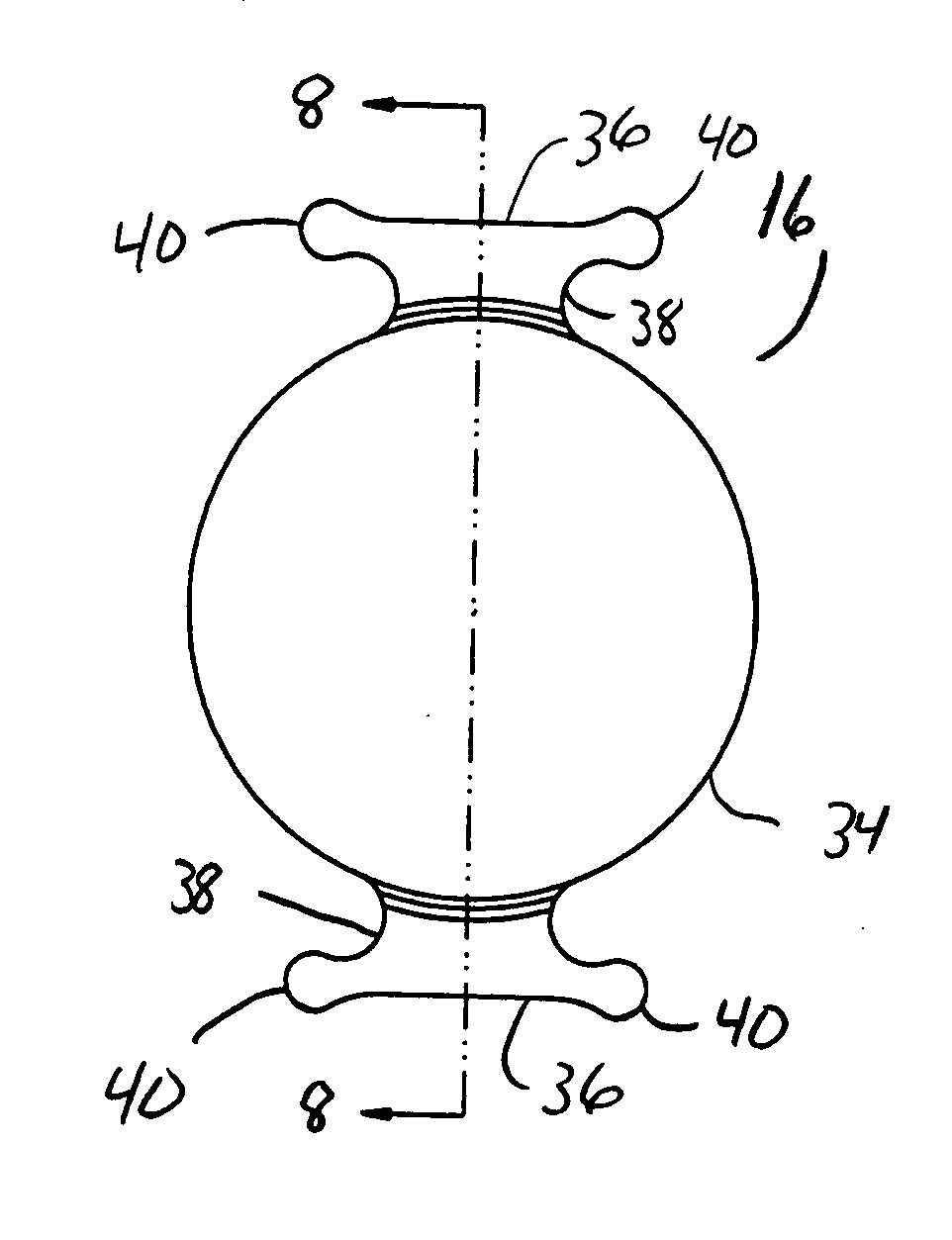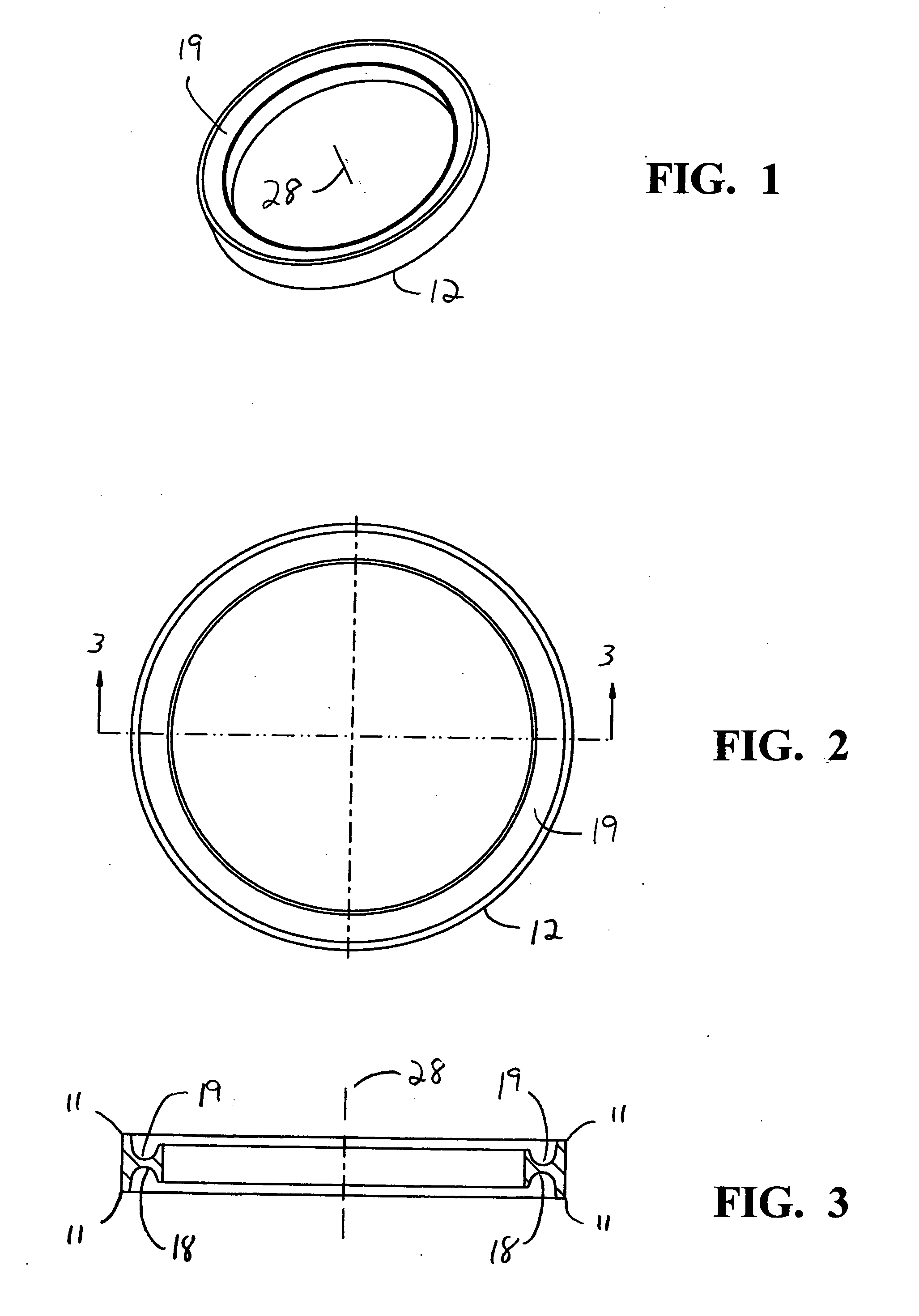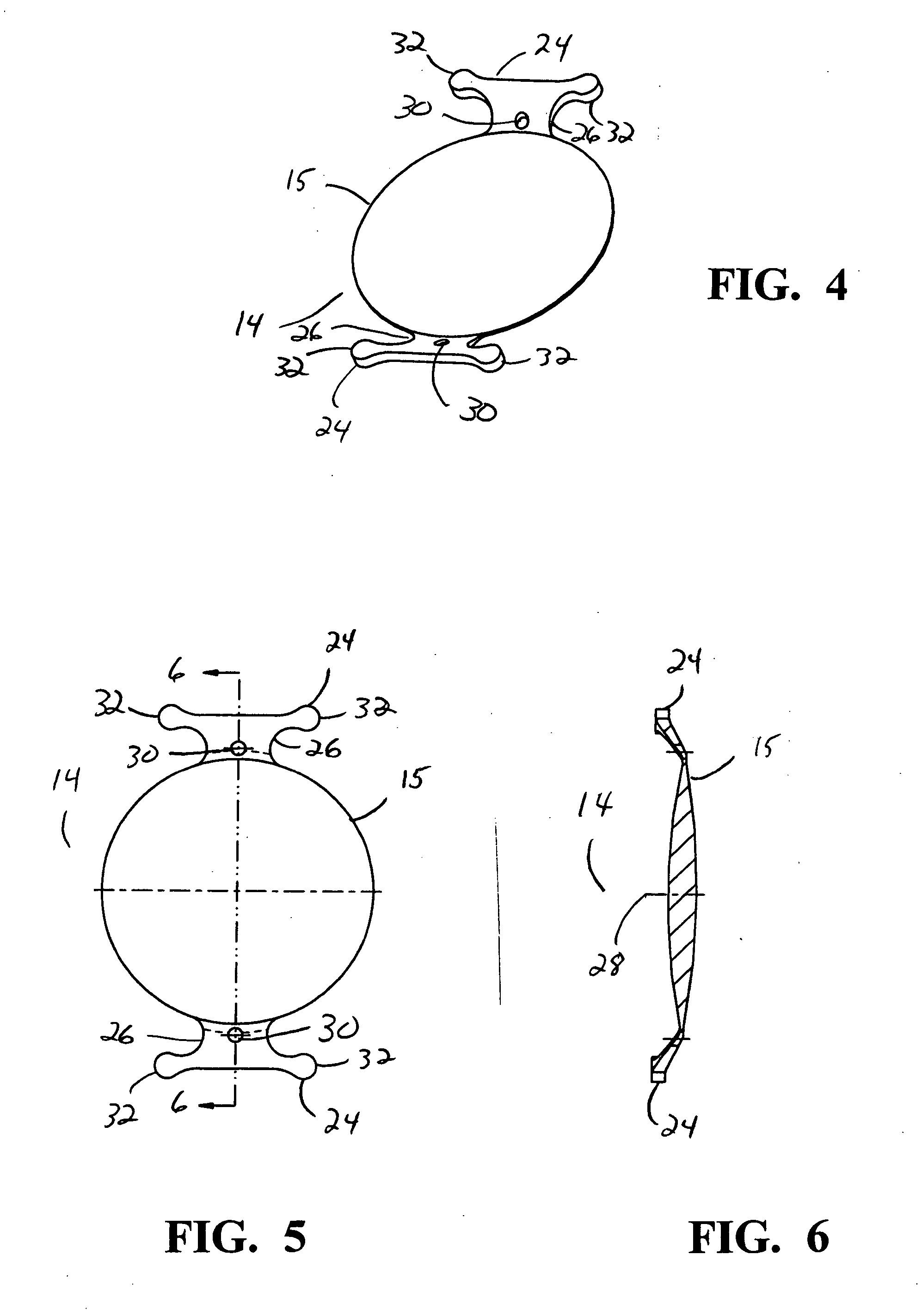Intraocular lens system
a technology of intraocular lens and lens plate, which is applied in the field of intraocular lens, can solve the problems of non-optical components and inability to correct refractive errors, and achieve the effect of reducing or eliminating pco
- Summary
- Abstract
- Description
- Claims
- Application Information
AI Technical Summary
Benefits of technology
Problems solved by technology
Method used
Image
Examples
second embodiment
[0032] As best seen in FIG. 10, in the present invention, first or base component 12′ has an inner rim or lip 150 that is slightly elliptical, oval, out-of-round or non-circular in shape having a short axis 100 and a long axis 102. This slightly oval or otherwise out of round shape will vary the amount of compression on haptics 24 of second component 14. Rotation of second component 14 so that haptics 14 are be aligned along short axis 100 will cause haptics 14 to more compressed than rotation of second component 14 so that haptics 14 are be aligned along long axis 102, thereby changing the position of 15 along optical axis 28 and correspondingly varying the effective refractive power of lens system 10 implanted in an eye.
third embodiment
[0033] As best seen in FIG. 11, in the present invention, inner rim or lip 200 of first or base component 12″ contains a plurality of cam ridges 201, 202 and 203 or varying step height. Rotation of second component 14 within base component 12″ causes haptics 24 to ride along on ridges 201, 202 or 203, thereby varying the location of optic 15 along optical axis 28 and correspondingly changing the effective refractive power of lens system 10 implanted in an eye.
PUM
 Login to View More
Login to View More Abstract
Description
Claims
Application Information
 Login to View More
Login to View More - R&D
- Intellectual Property
- Life Sciences
- Materials
- Tech Scout
- Unparalleled Data Quality
- Higher Quality Content
- 60% Fewer Hallucinations
Browse by: Latest US Patents, China's latest patents, Technical Efficacy Thesaurus, Application Domain, Technology Topic, Popular Technical Reports.
© 2025 PatSnap. All rights reserved.Legal|Privacy policy|Modern Slavery Act Transparency Statement|Sitemap|About US| Contact US: help@patsnap.com



